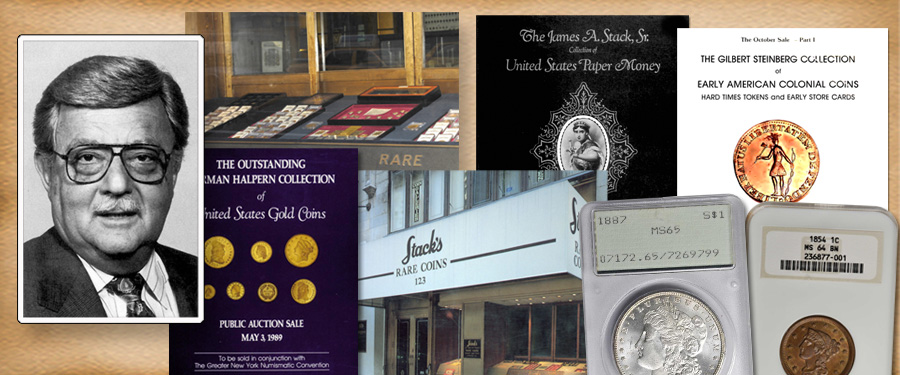
In 1991 the numismatic hobby really started to grow again, after years recovering from Black Monday in October 1987, when the market dropped about 20%. However, collectibles were able to hold steady in the market, as collectors and investors who had the extra money could purchase such items as a sign of wealth and a store of value.
At Stack’s business remained good, both over-counter and at public auction, and we decided to expand our staff of qualified numismatists in order to have help working the counter, traveling to shows and conventions, visiting clients in their homes or offices, filling our mail bid auctions, and producing catalogs for our public auctions, which were happening almost monthly. The team was a large one, but this allowed Stack’s to hold its position as a leading coin dealership.
Over time our crew would include many accomplished numismatists, some who stayed for years and some who remained for decades. Beyond the Stack family members who were managing partners, our crew included John Burnham, Robert Archer, James C. Risk, Jan Blamberg, Robert Erhlich, Scott Mitchell, Tom Panicella, George Weyr, Paul Nugget, Carl Carlson, David Alexander, Michael Battino, Michael Druck, Arthur Blumenthal, Greg Cohen, and Bruce Hagen among others. In addition, we had collectors who could help with specialized series and a full bookkeeping staff, a number of secretaries, a photographer and a layout specialist.
During 1991 we issued nine different auction catalogs that featured a wide range of United States gold silver and copper coins, in addition to Ancient and world coins. The sales had rarities as well as more common coins for the general collector. Our public auction room sat over 300 and there were times that there was standing room only. Conventions and shows started to grow in size, attracting greater attendance. The ANA and local clubs started to gain membership showing that the hobby was on an upward path.
One downer during this period was the issues sold by the U.S. Mint at high premiums against their intrinsic value (and ridiculous low face value). These initially flooded the market, and then were difficult to sell without losing money against the original cost. Dealers and collectors notified the Mint that without a secondary market, many buyers were losing interest and giving up collecting these issues. This was a problem that continued for many years after 1991.
For the most part, however, the year 1991 featured a revival of interest in numismatics and appreciation of the value of scarce and rare coins. It seemed that growth was happening in all series and areas of the hobby.





